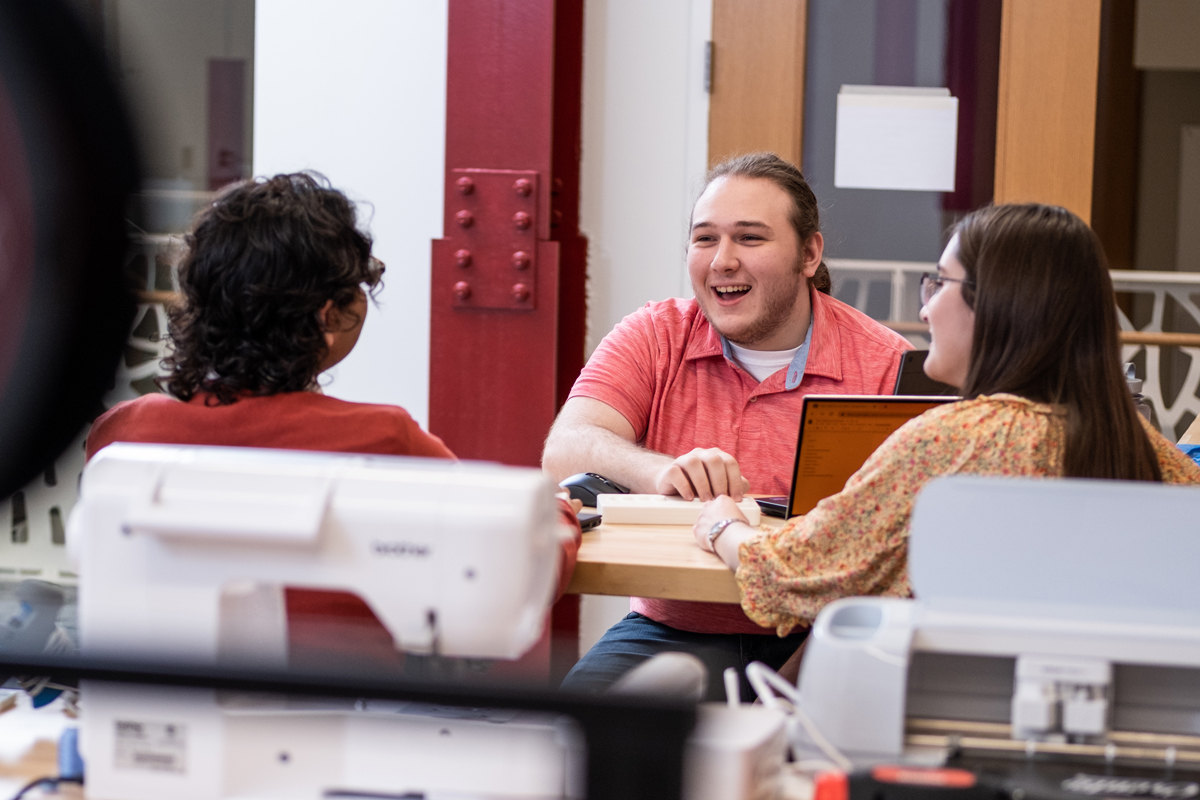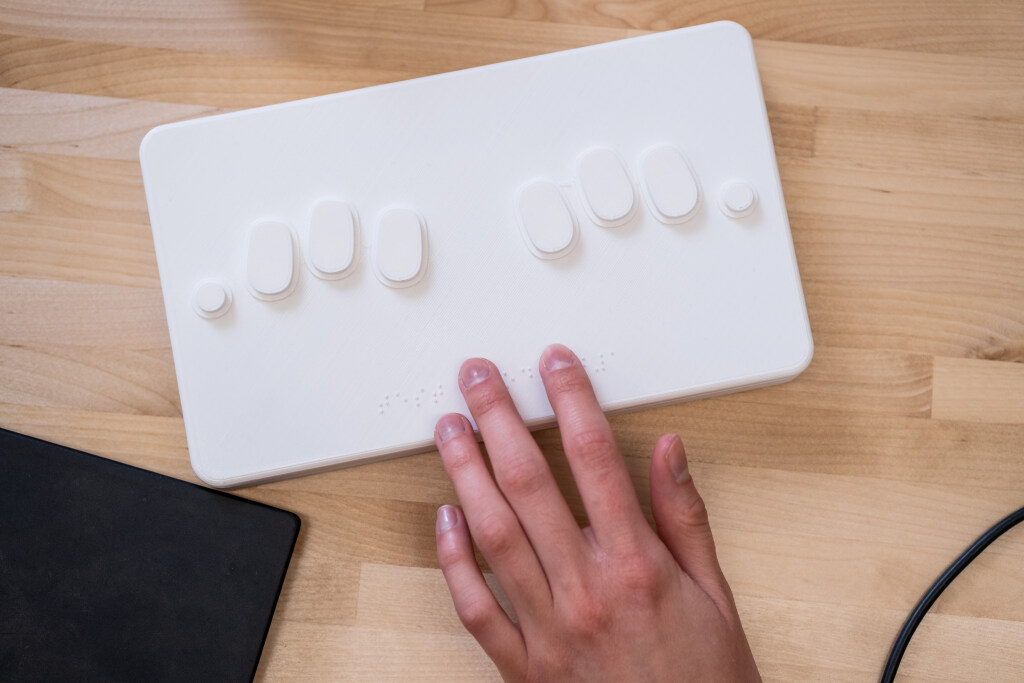This student startup is promoting braille literacy
A Cubed Design is building an affordable, accessible tool to help improve educational and employment opportunities for blind people.

In his time as a student at Ohio State, Garrett Carder has had many transformative experiences. One of them includes a weekly drive to the Ohio State School for the Blind in Columbus.
At the school, Carder and the A Cubed Design startup team teach the students skills — such as braille literacy and 3D printing — but they also learn from them.
It’s part of their design process to build a low-cost braille reader for blind people and those with low vision. The device will use digitally rotating cells of braille that help users read anything from books to phone screens.
“It’s been amazing working with the students, they’re great kids and really eager to learn new things,” says Carder, A Cubed Design’s CEO and a computer and information science major who will graduate in May.
A Cubed Design was one of six Ohio State student startup ventures chosen for the inaugural President’s Buckeye Accelerator cohort. The yearlong program, directed by Ohio State’s Keenan Center for Entrepreneurship, provides the teams with $50,000 in funding as well as mentorship, skill-building and community to help prepare them to launch their businesses.
A Cubed Design’s device is addressing the problem of braille literacy. Only 10% of blind students are learning braille in the U.S. And only 31% of blind adults are employed in the U.S., but 90% of employed blind people read braille.
“Our ultimate goal is to increase braille literacy,” Carder says. “And from there, further enabling people to get into STEM fields and do things like 3D printing along with empowering more blind people to find jobs easier.”
His passion for this project began his freshman year after a chance meeting with Caroline Karbowski, founder of See3D and a member of A Cubed Design.
“Through working with See3D and Caroline, I was able to meet children at the blind school who had very similar interests as me, things like 3D printing and technology. It’s made me want to help solve these problems they’re facing and help them have more opportunities. It was difficult for me to learn these things and find people who wanted to teach me. I can only imagine it being even more difficult with the lack of accessibility and technology they face.”
Through his work with blind students and Karbowski, he came face to face with those difficulties.
“One major problem is the lack of affordable braille screen readers and braille displays. Throughout the President’s Buckeye Accelerator, we really thought about the larger problems facing people who are blind and arrived back at the braille literacy problem. So we said, ‘Let’s create a screen reader we can get into more people’s hands.’
“The long-term goal is once we can get more people reading braille, and once we can get more people involved in technology, we can start getting people creating accessible 3D printers as an extension of what we’re doing.”

Speaking to that passion to help the blind community was critical during the Buckeye Accelerator pitches.
“Ultimately, one of the most important things was communicating our values when pitching A Cubed Design. We want to help this community, but ultimately what do we value? First and foremost, we want our product to be accessible and affordable and then accelerated, meaning get this in the hands of people quickly in a much easier and acquirable fashion than they’re used to.
“Speaking generally, any company being formed in this day and age needs to have a social or environmental goal. Many communities and sustainability goals have been left behind in the past. So it’s important to be doing good. If you’re not, who is going to want to support that?”
The relationships he built, the resources he leveraged at Ohio State, gave Carder the skills he needed to become an entrepreneur.
“I always tell people, come to the Innovation Studio because incredible interactions happen there on a daily basis. I’ve worked there for four years and grown immensely at my prototyping knowledge, my knowledge of machines and softwares. But also, being able to pitch a multitude of projects, such as See3D, was very useful in getting experience at pitching, creating a business idea, following through and sticking to it. We also worked with the MakeOHI/O program. It was a great place to find support and team members, building up a support network.
“All of that culminated in being able to win at the Buckeye Accelerator and receive funding. Those experiences were extremely helpful and necessary to make it through this program. Students should definitely take advantage of all the resources here at Ohio State.”